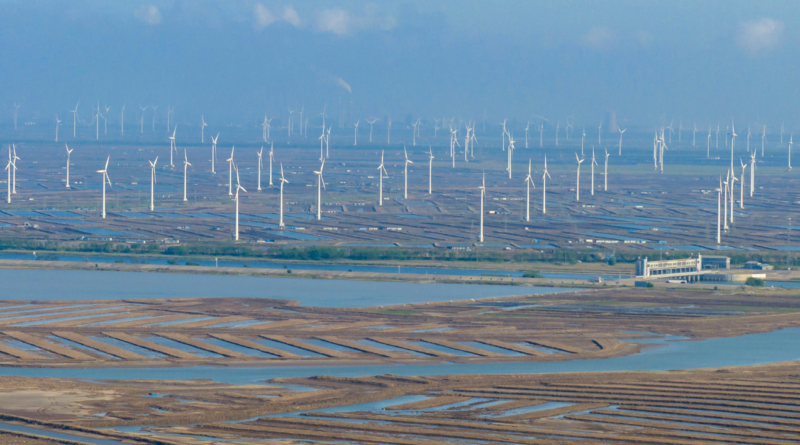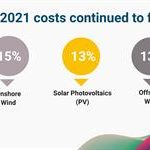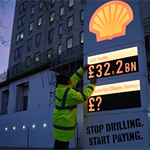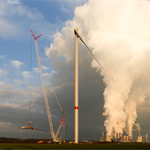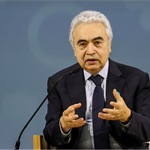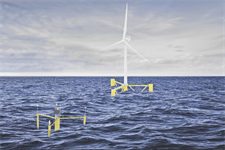World investing twice as much in renewables as fossil fuels – IEA
Energy Disrupter
The IEA’s World Energy Investment 2024 report shows that global spending on renewable energy infrastructure such as wind, solar and battery storage is set to hit double the amount in fossil fuels this year, pointing to strengthening global support for renewable energy development and the transition away from fossil fuels.
It shows that total global investment in energy is set to reach $3 trillion in 2024, with $2 trillion of that outlay expected to go into clean energy technologies and infrastructure, including renewables and energy efficiency and electrification.
Spending on renewable power last year was $735 billion.
Solar PV is set to attract more investment than all other energy generation sources combined, including fossil fuels, according to the IEA.
“Clean energy investment is setting new records even in challenging economic conditions, highlighting the momentum behind the new global energy economy. For every dollar going to fossil fuels today, almost two dollars are invested in clean energy,” said Fatih Birol, executive director of the IEA.
“The rise in clean energy spending is underpinned by strong economics, by continued cost reductions and by considerations of energy security,” he said.
Birol added that the new investment was also being spurred by government policy with renewed political will swinging behind renewables as major economies such as China and the US compete for influence in clean energy supply chains.
Typically for renewables growth in recent years, China will account for the largest share of renewable energy investments in 2024, spending an estimated $675 billion this year.
.png)
Wind and solar boons
Spending on wind and solar is now paying investors much more than was previously the case, according to the report.
It showed that in 2023, each dollar invested in wind and solar PV yielded 2.5 times more energy output than a dollar spent on the same technologies a decade prior.
Both wind and solar continued to offer attractive investments despite profitability troubles in the manufacturing sector, the IEA stated.
It explained that profitability for renewable utilities are returning to pre-pandemic levels, with return on invested capital (ROIC) increasing one third in 2023 from a year earlier.
“ROIC is also notably more stable compared to the volatility of oil and gas companies in recent years,” the report stated.
The one exception to that trend in renewables was in offshore wind, however. The IEA flagged widely reported issues such as rising costs and supply chain pressures to explain the cancellation of multi-gigawatt offshore wind projects in the US, and a lack of offshore wind bids in the UK’s most recent renewables tender.
“Nonetheless, successful contract renegotiations, adjustments in auctions and regulatory support such as the European Union’s wind power package are all positive signs that demonstrate the need for regulators to remain responsive to changing market conditions,” the report read.
Public and private
Regarding the source of energy investments explored in the report, looking at 2018-2023 averages, 48% came from the private sector and 37% from governments, with the remaining 15% coming from households.
Commercial sources account for some 74% of financing in energy, the IEA stated, with 25% coming from public sources such as the state.
The report nevertheless underlined the importance of the state in facilitating capital flows for new energy infrastructure.
“Energy investment decisions are primarily driven and financed by the private sector, but governments have essential direct and indirect roles in shaping capital flows,” the report read.
However, the IEA also suggested that banks are becoming more inclined again to put funding behind fossil fuels rather than clean energy projects, despite the climate crisis, citing Bloomberg data. The ratio of bank funding for clean energy projects compared with fossil fuels has worsened, according to the report. For every $1 loaned to fossil energy interests, clean energy received $0.75 in 2021, and this was down to $0.73 in 2022.
Despite the surge in renewable energy investments, spending levels need to grow even further to meet the global goal of tripling renewables capacity by the end of the decade in line with global climate targets, according to the IEA.
The report showed that under current policies and conditions only two thirds of the investment needed to triple renewable energy capacity by 2030 would occur — leaving a $400 billion gap every year that needs to be made up.
“Early signs of a potential slowdown in the growth of global spending on renewables, and persistently insufficient levels of investment in emerging market and developing economies (EMDEs) outside China underline the need to double down if we are to achieve our climate and energy access goals,” the report read.
EMDEs outside of China currently account for only 15% of global spending in clean energy infrastructure and technologies, according to the IEA. “Both in terms of volume and share, this is far below the amounts that are required to ensure full access to modern energy and to meet rising energy demand in a sustainable way,” it stated.
Global upstream investments in oil and gas are expected to increase by 7% in 2024 to reach $570 billion, driven by national oil companies in the Middle East and Asia.
Clean energy investments by oil and gas companies hit $30 billion in 2023 — just 4% of the industry’s overall capital spending last year.

